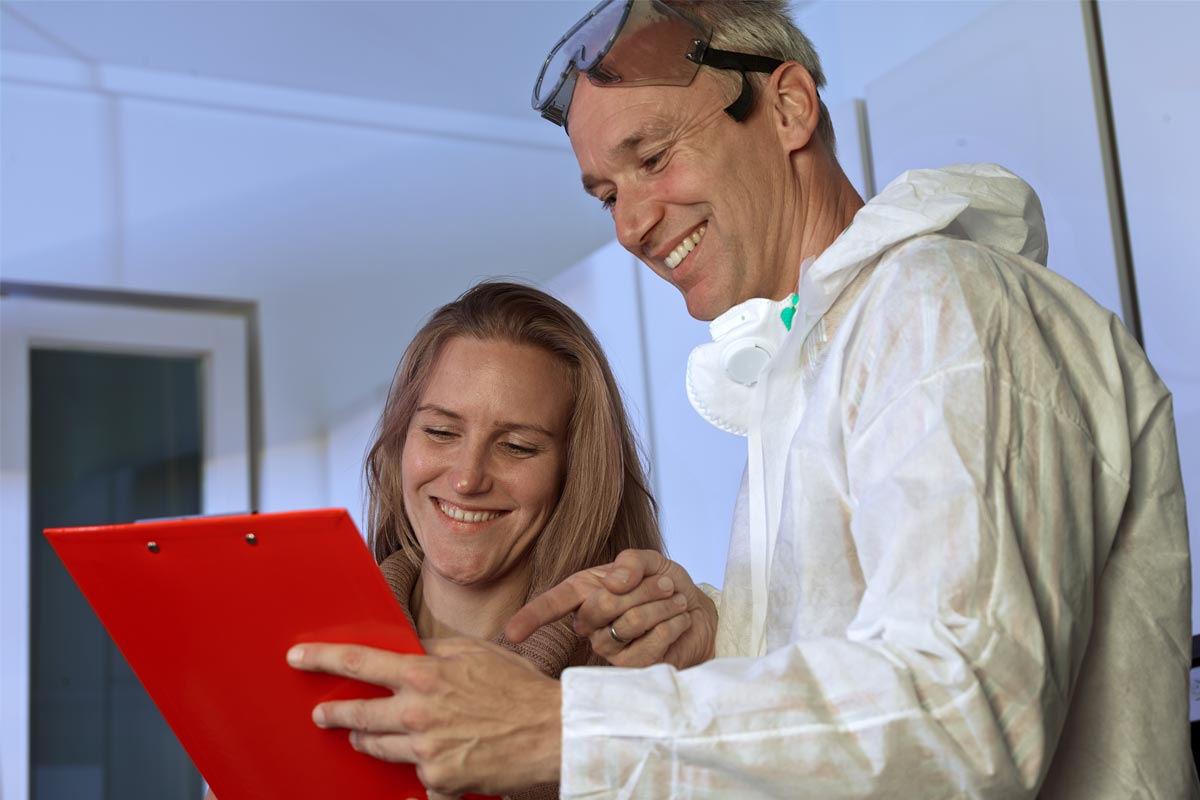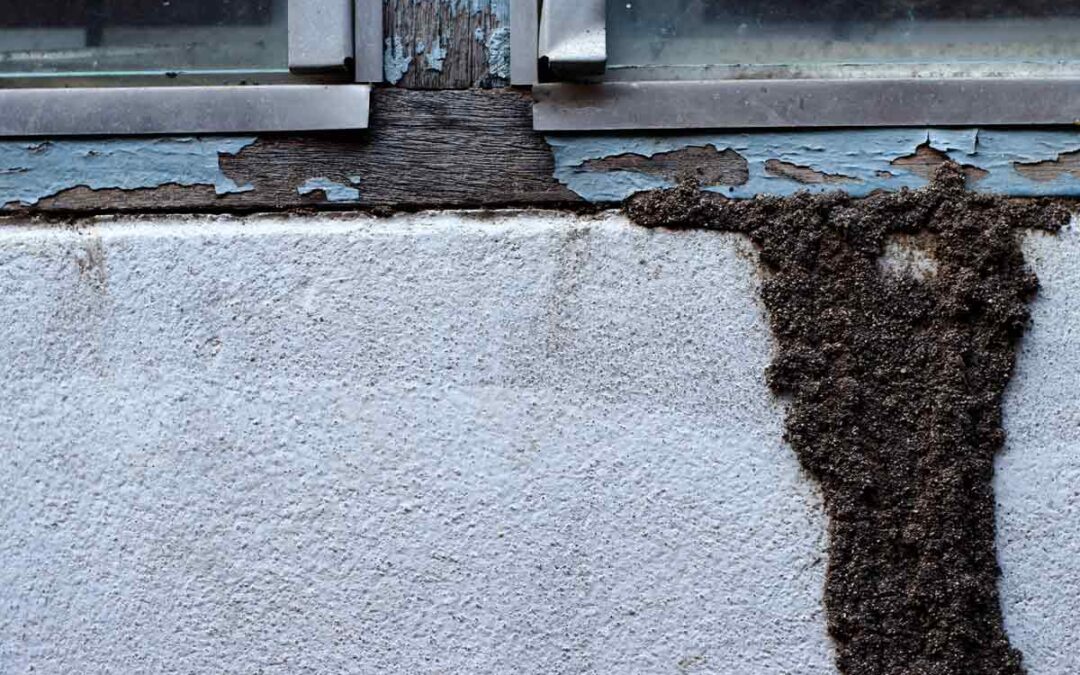Termites represent a significant threat to property structures across certain regions of Canada. These wood-destroying insects can cause extensive damage silently, often going unnoticed until major structural issues arise. Understanding the potential risks underscores the necessity of proactive measures.
Regular professional termite inspections are a fundamental aspect of responsible homeownership. They serve as a crucial defence mechanism, helping to detect termite activity early before costly repairs become necessary. This guide provides a general overview of what homeowners can anticipate during a termite inspection process and elucidates the importance of this service.
Before the Inspection: Preparation is Key
- Clear Access to Key Areas: Inspectors need unobstructed access to inspect susceptible zones like basements, crawl spaces, attics, foundation walls, and utility entry points. Homeowners should relocate clutter away from these areas before the inspection to maximize the effectiveness of the assessment and avoid an incomplete report.
- Provide Relevant Property Information: To ensure a thorough property inspection, gather information about your property’s history with termites, including previous treatments, identified problem areas, construction type, and recent structural wood renovations. Inform the inspector about specific concerns and locations to focus their efforts efficiently. Document previous inspections or treatments if possible.
- Manage Moisture Sources: Before the inspection, address any moisture issues, such as leaking pipes, faulty gutters, poorly ventilated crawl spaces, or improper grading, as they create conditions conducive to termites, particularly the Eastern Subterranean Termite, demonstrating proactive maintenance and simplifying the assessment process.
- Secure Pets and Children: To ensure safety and efficiency during inspections, keep pets and young children away from the inspection zones. This prevents interference, ensures everyone’s safety, and allows the inspector to focus on detailed examinations, which may involve confined spaces or specialized tools.
What the Inspector Will Examine in Your Home
- Interior Structural Components: The home inspection focuses on areas with wood present and potentially vulnerable, such as basements and crawl spaces. It includes checks of sill plates, floor joists, support beams, and wooden posts. Inspectors also examine baseboards, window frames, plumbing penetrations, and visible wood construction elements.
- Exterior Foundation and Perimeter: The exterior examination of a building focuses on its foundation and surrounding area, examining visible foundation walls for mud tubes, cracks, and entry points. Inspectors also examine utility lines, wood siding, window/door frames, and porch/deck supports to identify potential breaches or termite access routes.
- Attached Wooden Structures: The inspector will inspect decks, porches, wooden patios, fences, and attached garages for signs of infestation or decay. These structures can act as bridges for termites, allowing them to bypass treated soil or physical barriers, making a thorough assessment crucial.
- Surrounding Property Features: The inspection of a house often involves checking nearby structures like sheds, gazebos, and dead tree stumps for termite colonies. These areas could migrate towards the main structure. The inspector also notes conditions conducive to termite activity, such as excessive mulch or poor drainage.
During the Inspection: What to Expect

- Systematic Visual Examination: The inspection involves a thorough visual search using a flashlight to identify high-risk areas, including those prepared by the homeowner. Inspectors look for termite-built shelters, damaged wood, holes, frass, discarded wings, and live termites. Experience helps them spot subtle indicators often missed by untrained eyes.
- Probing and Tapping Techniques: Inspectors use tools like screwdrivers, awls, or tapping tools to probe and tap wooden structures, revealing hidden galleries or damage beneath the surface. This tactile and auditory assessment is crucial for confirming damage that might not be visible externally.
- Moisture Detection Equipment: Electronic moisture meters are used by inspectors to measure moisture content in wood or other building materials, identifying areas vulnerable to termite attack or conditions conducive to infestation. High moisture doesn’t necessarily indicate termites, but it indicates areas requiring further investigation.
- Documentation and Communication: The professional will document their inspection findings using notes, photographs, or diagrams, mapping out areas inspected, termite evidence, conducive conditions, and inaccessible areas. If the homeowner is present, they should communicate preliminary observations, explaining their purpose and potentially identifying areas of concern.
After the Inspection: Understanding the Report

- Comprehensive Findings Document: A written report detailing the inspection’s scope, areas examined, and termite evidence, distinguishing between active and past infestations, and identifying conducive conditions like wood-to-soil contact, moisture, and debris near the foundation.
- Clear Recommendations: The report suggests vigilance and regular inspections for termite activity, while corrective actions like drainage improvement, debris removal, and foundation crack sealing are recommended for long-term protection against infestations.
- Treatment Plan Details (If Applicable): The report will provide a proposed treatment plan for an active termite infestation, outlining methods like liquid termiticide barriers or baiting systems, with details on treatment areas, products, cost, timelines, and warranty details.
- Review and Clarification Opportunity: A reputable pest control service provider should provide a thorough report, allowing homeowners to ask questions, clarify technical terms, understand the severity of findings, and discuss the implications of proposed treatments or preventative measures, empowering them to take appropriate action.
A professional termite inspection is crucial for property safety and longevity. It provides early detection and prevents structural damage. Understanding the inspection process helps homeowners engage with pest management professionals and implement necessary measures. Prioritizing inspections safeguards structural integrity and financial value, especially in Canadian regions like Southern Ontario.
For comprehensive termite inspections and effective pest control solutions tailored to your property’s needs, consider contacting experienced professionals. Mr. Pest Control offers expert services across several Ontario locations. Reach out to us for inquiries or to schedule an inspection at the following numbers: (705) 739-7378 (PEST) for Barrie and Simcoe County, (705) 326-3377 for Orillia, or (705) 739-7378 for Midland & Area. Taking preventative action is key to protecting your home.



